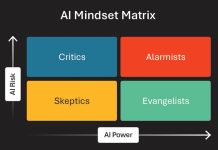Non-cash incentive programs have never been more important than they are now.
Hiring is down 40% from a year ago. Layoffs continue to accelerate. Inflation remains at record highs, and the Federal Reserve can’t commit to pausing rate hikes.
For companies, this means lean thinking. Minimize costs, maximize output. But how?
Management teams across all industries often mistake incentive and recognition programs as discretionary “add-ons” to make employees feel appreciated when times are good.
Unfortunately, the consequence of this thinking means these same programs often get tossed aside as “extra” when the tides turn, industry or economic tailwinds reverse course, and cost- cutting becomes the tried-and-true strategy. But how tried-and- true is it?
I would argue not very. At least not as a standalone strategy.
Managers who have experience with non-cash incentive programs know they are more important when times are tough. They are a lifeboat that can ensure stability, maximize output, and keep a workforce intact and ready to accelerate past the competition when the winds inevitably reverse course once more.
Changing the Mindset
Fully understanding this requires a simple change in thinking. Non-cash incentive programs are not a cost. These programs are strategic investments in the performance and well-being of your employees. And what do investments require (at least the ones worth making, that is)?
Returns. Market-beating returns.
According to the Incentive Research Foundation, companies incorporating incentive and recognition programs as part of their compensation and engagement strategies realize a 22% increase in productivity.
According to Harvard Business Review, these same incentive and recognition strategies led to an average increase in revenue of 44%. On the engagement front specifically, HBR reports that companies with high levels of employee engagement saw an average return on assets over 2½ times higher than those with low engagement.
Impressive Returns
This is all well and good, but thinking back to our investment mindset, what gives? What’s to say these impressive numbers can justify the price of a program under certain conditions?
Let’s look at employee recognition, specifically. After all, with millennials and Gen Z occupying larger proportions of the workforce each year, the data tells us younger generations care about a lot more than money when deciding to take a job or jump ship to another one. Here is what Gallup found.
Using U.S. Bureau of Labor Statistics (BLS) data, companies with 10,000 employees and established recognition programs saw a 9% increase in productivity, which translated to an average of $92 million in increased output. For the same companies, absenteeism also decreased 22%, which translated to an average of $3 million in cost savings. And among all companies, regardless of size, sales teams with incentive programs reported a 79% success rate.
Considering the median spend for all companies on employee recognition and incentive programs is just 1% of payroll, we begin to see a much clearer return on investment picture. These programs are effective for a reason, and it is much easier to see when general market or industry surges don’t cloud the picture.
Cost-Cutting Is Cowering
Workforces are changing. Workplaces are changing, too.
And the backdrop of an uncertain economy makes it hard for management teams to distinguish a path forward that will maximize performance without emerging weak on the other side.
Now is the time to invest in your workforce. Keep the employees you have and incentivize upskilling, advancement and open feedback. Boost worker production by tailoring non- cash incentives that motivate in ways cash alone can’t. The list of benefits is endless.
So, for businesses, if the strategy is cost-cutting alone, and especially if incentive programs are part of that, you are just delaying the inevitable. Going lean by shrinking workforces and cutting “discretionary” spending doesn’t address the core issues specifically targeted by incentive programs.
Without the right incentive strategy, companies will find themselves dealing with the same economic and industry headwinds as competitors. However, these shared struggles also will be layered on top of costly retention, productivity and performance issues, all of which will be spread across a smaller, less reliable workforce.
Make the investment if you haven’t already. Odds are it will more than pay for itself next time we find ourselves in a murky business climate.




